PROTECT YOUR DNA WITH QUANTUM TECHNOLOGY
Orgo-Life the new way to the future Advertising by AdpathwayNot all of us have acres of space to garden! Some of us have a raised bed, a few containers, or a simple plot. Without much space, you must take advantage of every little empty pocket to grow the most crops possible.
With companion planting, you’ll plant two different crops, a tomato and another type, closer together than you normally would. Close together, the two separate crops will help each other grow. Tomatoes offer support for vining beans and peas, while they also offer shade for leafy greens beneath them.
No matter what veggies you like or how much space you have, there are options on this list for you. Consider growing these 10 magic-making companions near your tomatoes for a happy, healthy, and thriving garden.
Scarlet Nantes Carrot

Scarlet Nantes Carrot Seeds

Moss Curled Parsley

Moss Curled Parsley Seeds
Asparagus
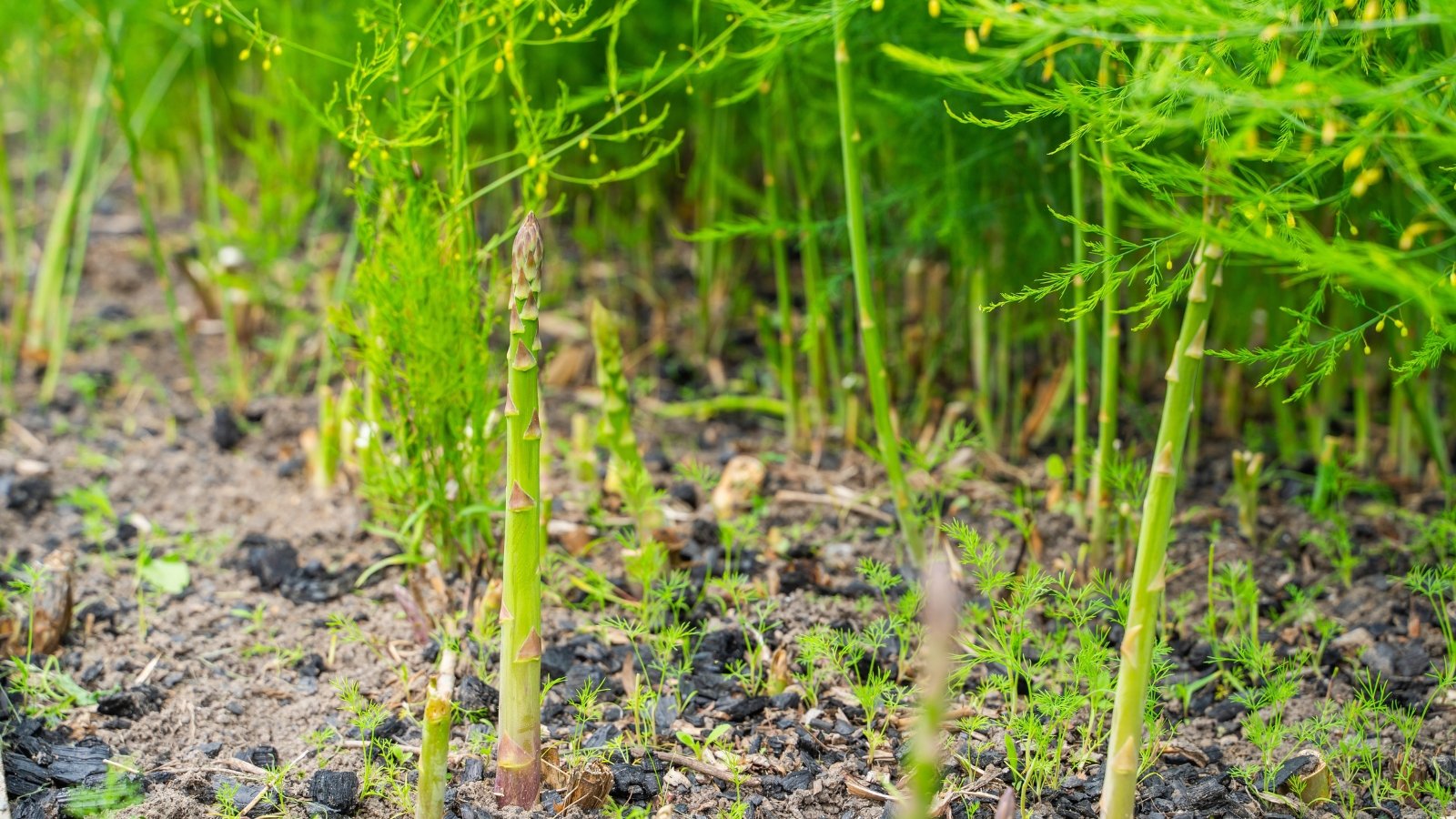 Spring shoots pop up fast before turning into tall greenery.
Spring shoots pop up fast before turning into tall greenery.Perennial asparagus is a great crop for the garden. Crowns grow edible spears in late spring and early summer, then they produce long, fern-like leaves as the spears lengthen and open up. This unique growth habit makes asparagus an excellent companion for tomatoes.
Tomatoes are rumored to repel asparagus beetles. Although there is a lack of scientific research on the topic, many gardeners claim this to be true in their gardens. Try planting the two together to see the results for yourself.
Pole tomatoes grow upright and require staking, while bushy, determinate ones stay low to the ground. Stake pole types when growing them next to asparagus, so they don’t lean or flop on your crop.
Carrot
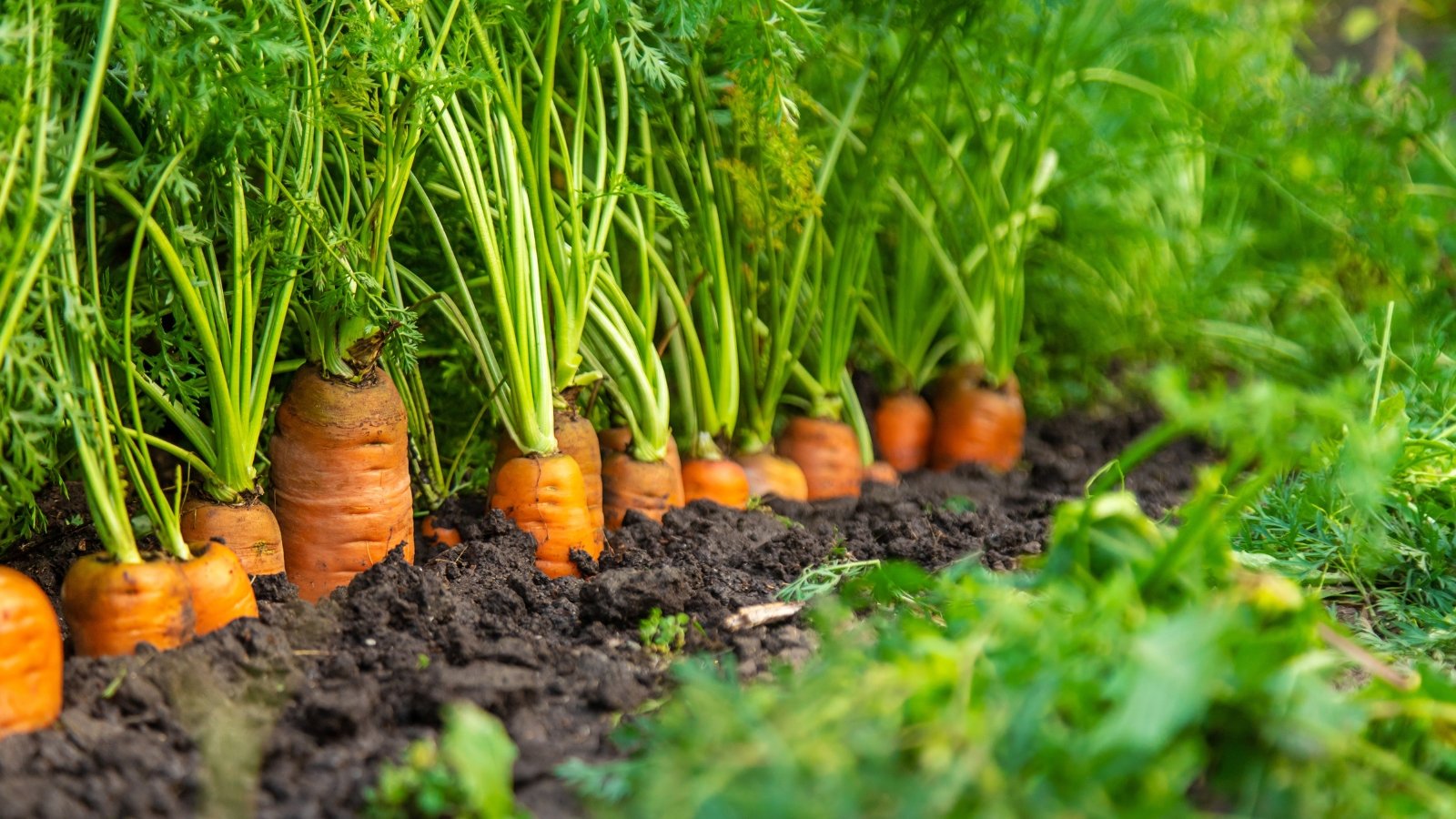 Growing under vines helps roots beat the summer heat.
Growing under vines helps roots beat the summer heat.Carrots are biennials that we grow as annuals for their crunchy, nutritious, and delicious roots. Whether you prefer orange or rainbow carrots, planting them alongside tomatoes is an excellent way to maximize garden space.
Carrots are root crops, and tomatoes are fruiting crops. While the carrots thicken and swell below ground, the tomato vines grow upwards and offer shade for companions below. Because carrots prefer cool weather, planting tomatoes above them can help you cultivate a summer carrot crop despite hot temperatures.
It’s best to grow pole tomatoes with carrots, as bushy types may provide too much shade. A little shade is okay for carrots, but too much can cause infections, pest infestations, and poor growth.
Chives
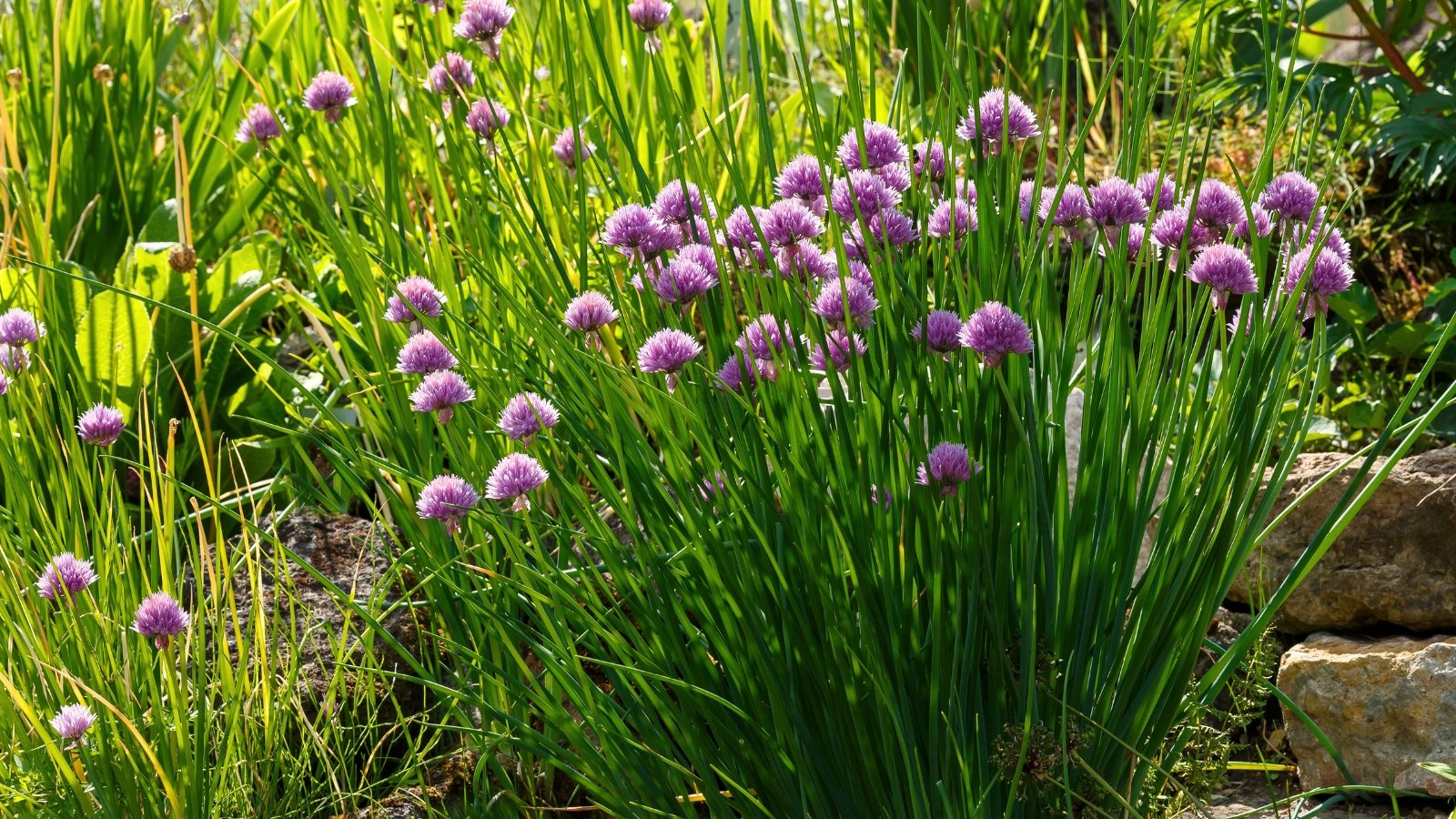 Onion-scented leaves help keep hungry bugs away from fruit.
Onion-scented leaves help keep hungry bugs away from fruit.Chives are like perennial green onions. They don’t form big bulbs; instead, they sprout thin, green onion shoots that are slightly sweet and flavorful. If you’re growing tomatoes, you should plant a few chives around the site.
Chives are in the onion family, meaning they repel insect pests and protect your ripe fruits. They tend to spread out each year, so give them some space from your nearby tomato plants.
Tolerant of partial shade, these magic-making companions grow well beneath bushy or pole tomatoes. If you notice the onion relatives have too much shade, simply prune the lower tomato leaves to allow more sunlight to reach them.
Garlic
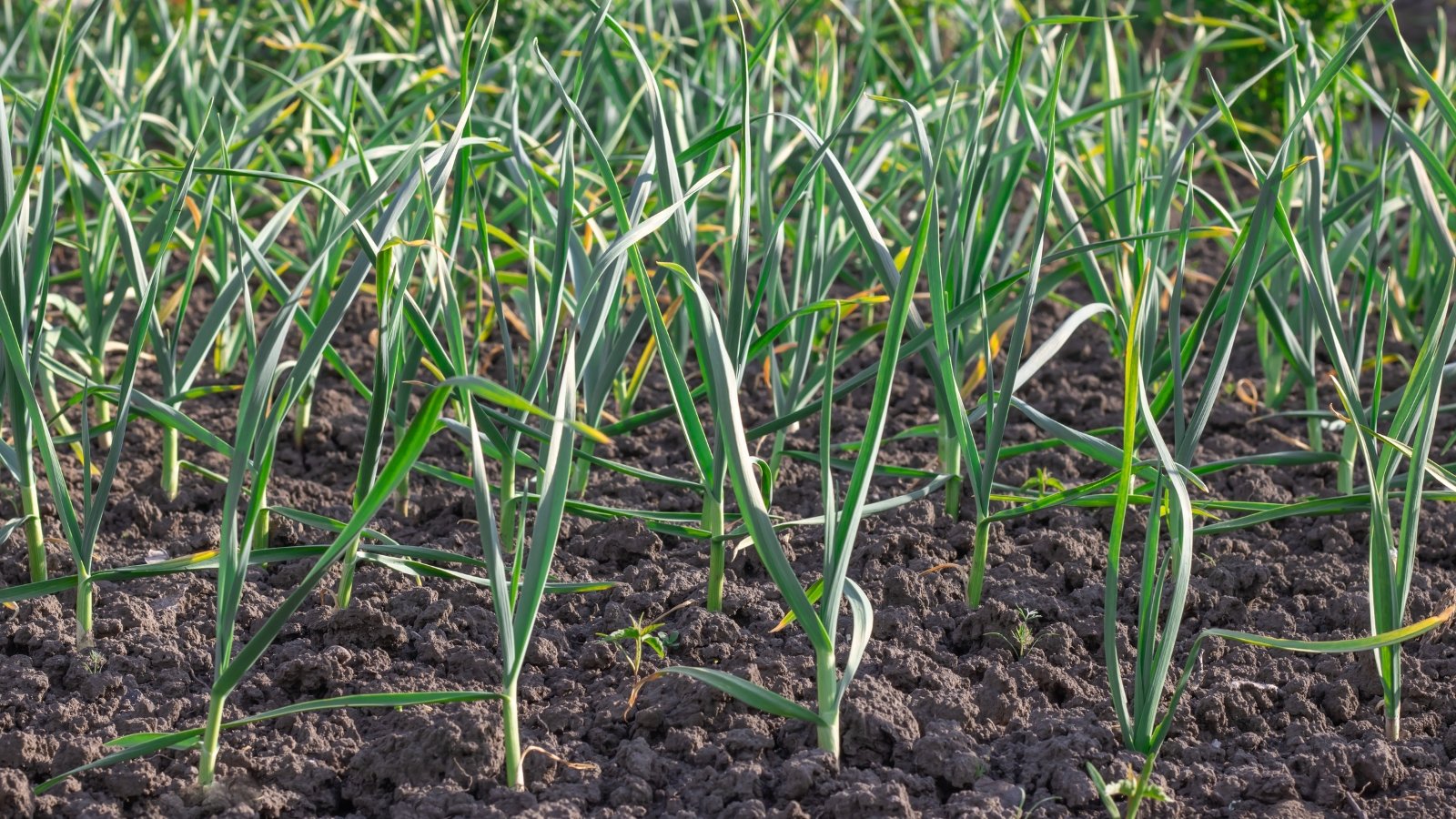 A long, cold season helps garlic develop its signature flavor.
A long, cold season helps garlic develop its signature flavor.Garlic is a perennial crop that’s a close relative of onions, chives, and scallions. You plant it in the fall and harvest it in summer! It needs a long, cold growing season to perform well.
Because garlic takes a long time to finish, you may have beds full of the root crop when you’re ready to plant tomatoes. Instead of keeping the two separate, you can grow tomato plants between the swelling garlic.
Tomato seedlings need consistent moisture, while garlic heads need low amounts of water to dry, cure, and form their papery coatings. If the plants are too wet while they mature, you may experience garlic rot. For best results, use targeted drip irrigation that waters your tomatoes while avoiding the companion garlic.
Gooseberry
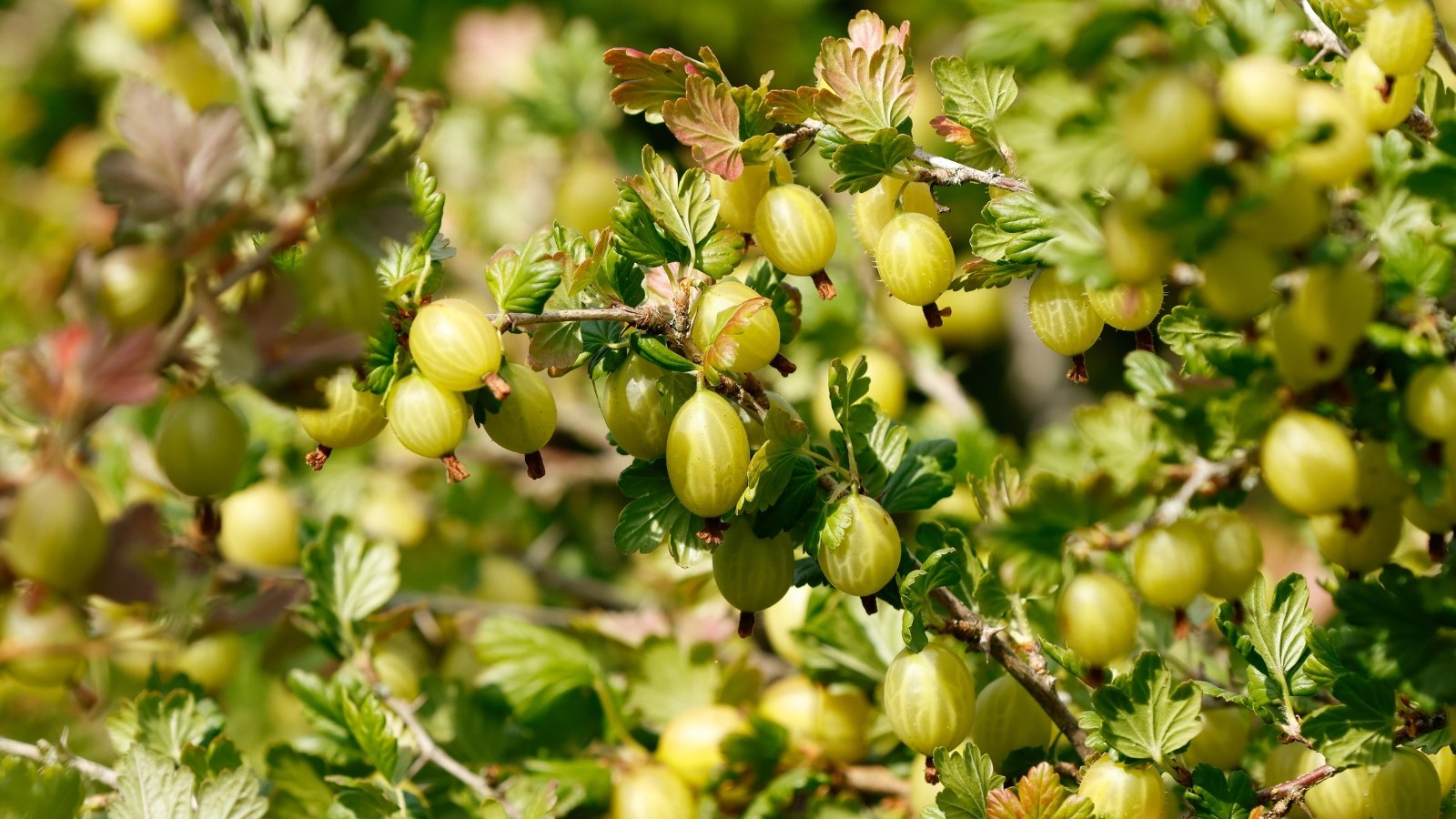 Tart berries grow best with a little tomato neighbor help.
Tart berries grow best with a little tomato neighbor help.Gooseberries are delicious, tart berries that grow on woody shrubs. They’re close relatives of currants that grow similarly. You can tell gooseberries apart from currants by their spines; gooseberries are thorny, while currants are spineless.
Tomato plants contain alkaloids, or chemicals that can harm pests and prevent them from thriving. Grow tomatoes as companions near your gooseberries to discourage pests on the fruiting shrubs.
Gooseberries stand upright and tall, and tomatoes require staking. You may use the gooseberry shrubs to support floppy tomato stems. If the varieties grow taller than five feet, you’ll want to add a trellis or cage for further support.
Green Bean
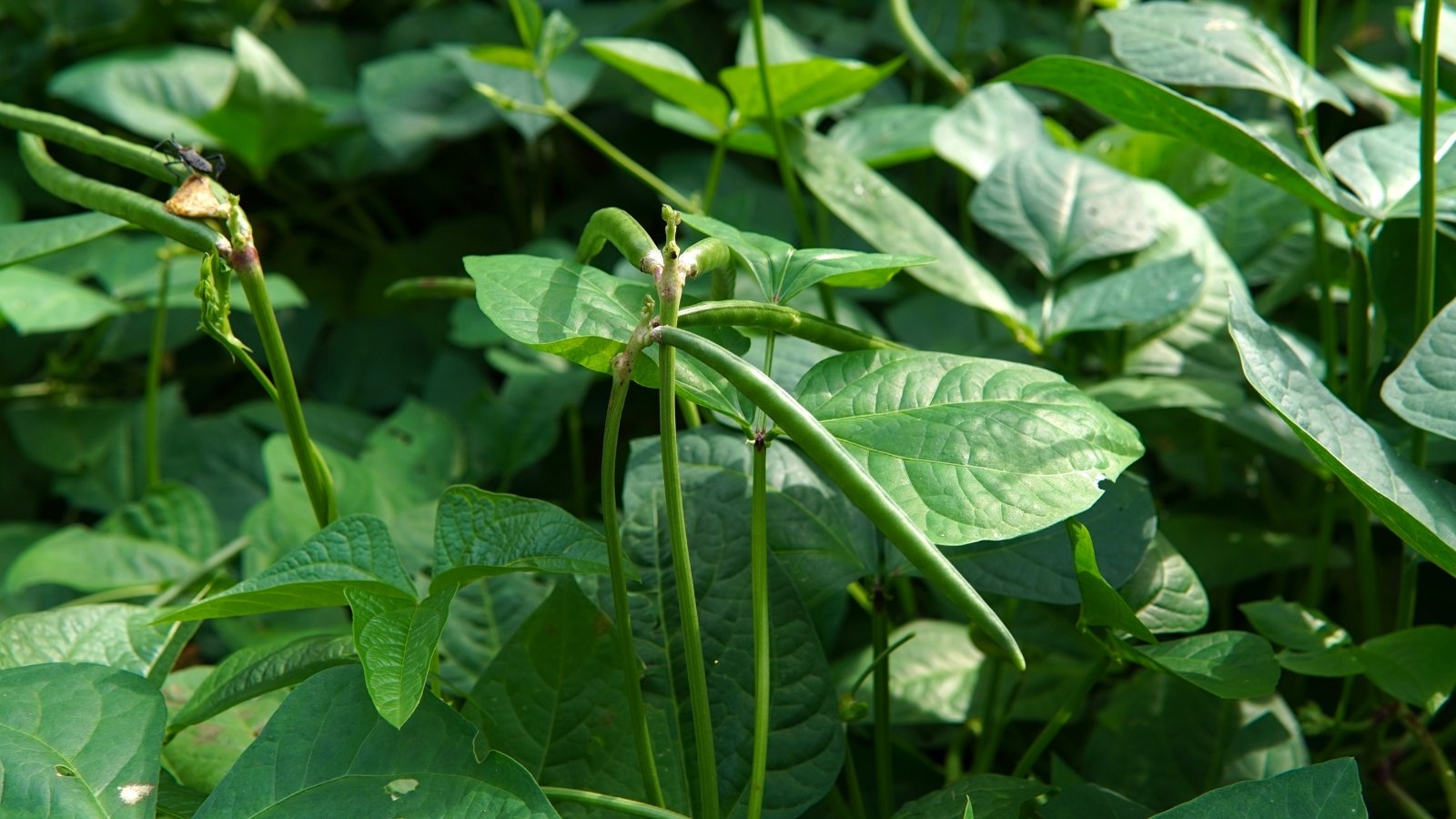 Green pods mature quickly on bush plants.
Green pods mature quickly on bush plants.Green beans grow from bean plants! The same vines that produce green beans also grow dry beans, like black, pinto, and red beans. Green beans are the tender bean pods, while dry beans are the mature seeds that you shell from the pods.
Green beans and pole tomatoes are superb companions. You can have both crops grow on the same support. The vining bean stems will wrap around it, while the tomato stems will need tying or securing to stay attached.
As with tomatoes, there are two main types of green beans: bush and pole. Bushy types mature early and quickly, whereas climbing pole varieties mature later in the growing season and for a longer period.
Marigold
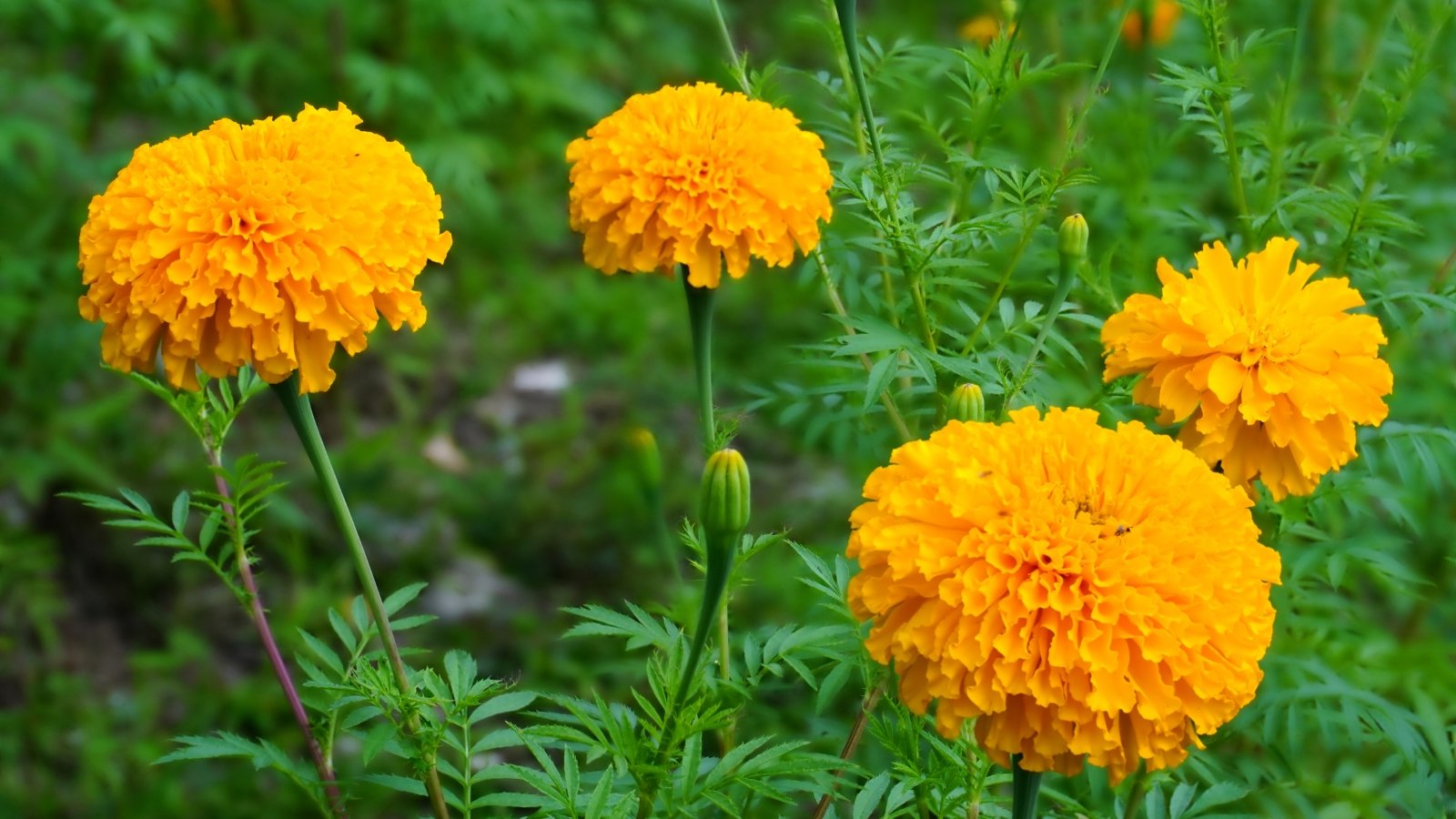 Colorful companions attract helpful bugs and keep pests away.
Colorful companions attract helpful bugs and keep pests away.Marigolds love tomatoes! Together, the two grow like magic. Marigolds repel pests and invite pollinators to the garden. With fewer pests and more pollinators, your tomato cultivars will produce impressive yields throughout the summer.
Interplant the marigolds between your young tomato seedlings. Let the two mature, and they’ll fill empty garden space with lush leaves, gorgeous blooms, and delicious fruit.
Many marigolds offer a plethora of options for home gardeners. Choose from African, French, and signet marigolds, among many others!
Nasturtium
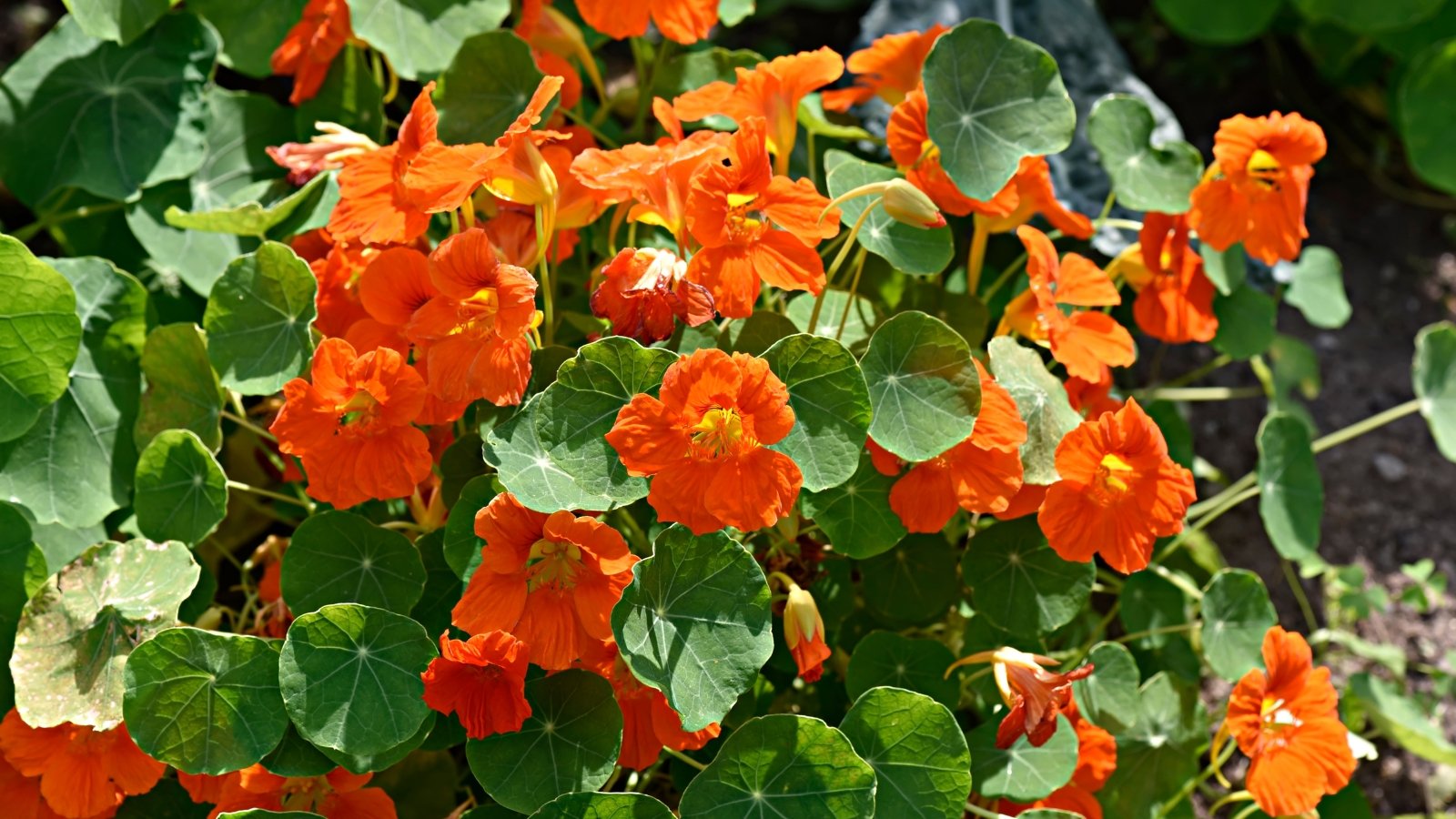 Slugs and aphids often prefer these blooms over tomatoes.
Slugs and aphids often prefer these blooms over tomatoes.Nasturtiums are frost-tender perennials that readily self-seed. They work well as annuals in all zones, and as perennials in USDA hardiness zones 10 and above. Next to tomato plants, these magic companions lure slugs and aphids away from the fruits.
There are two main types of nasturtiums available: climbing and mounding. Use climbing types alongside pole tomato varieties, and mounding ones next to bushy, determinate tomato types.
Though frost will kill your nasturtiums and tomatoes, the nasturtium seeds will persist underground over the winter! You may see seedlings sprout next spring and summer, even if you didn’t plant them again.
Onion
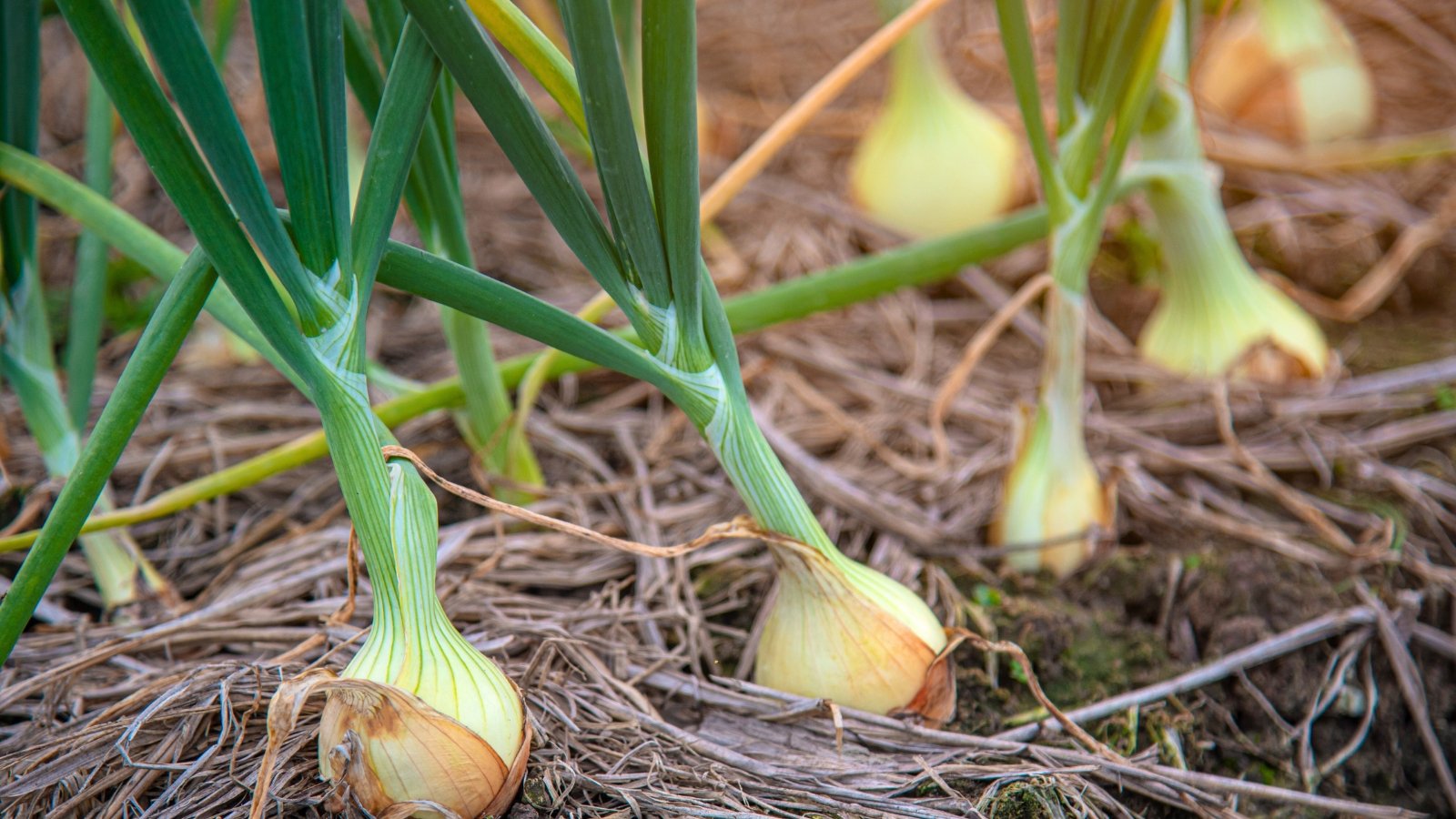 Green shoots and bulbs both make tasty kitchen additions.
Green shoots and bulbs both make tasty kitchen additions.Onion bulbs are essential in cooked dishes, but did you know the tops and flowers are edible? Use all parts of your onions to save money on scallions, bulbs, and onion powder.
Next to your tomato crop, onions perform like garlic and chives. They repel pests, retain moisture in the ground, and behave nicely next to tomato roots.
Which onions to grow depends on where you live. Select from short, intermediate, and long-day onions. If bulb types don’t perform well in your region, try green onions or chives instead.
Parsley
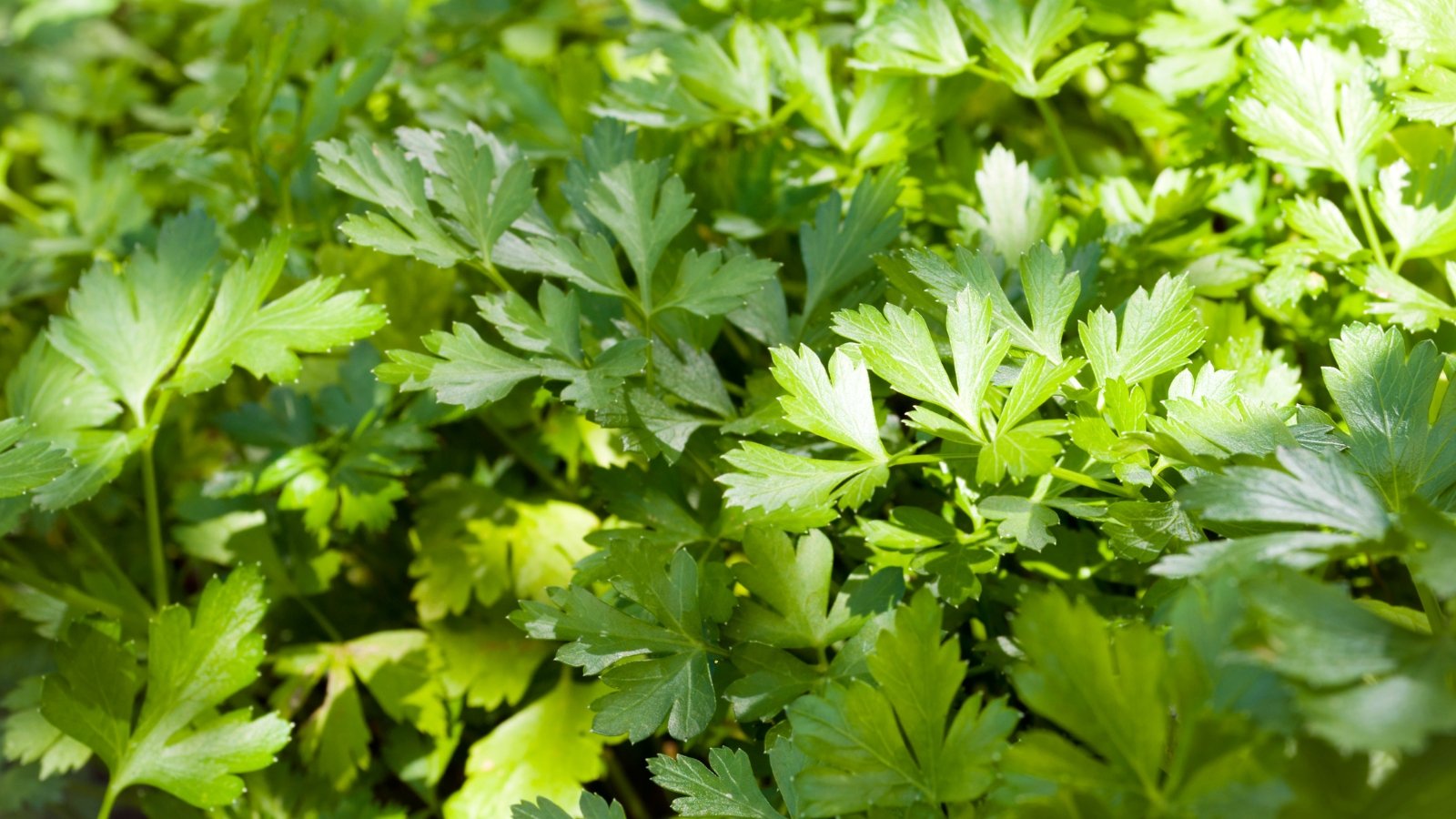 Frilly green leaves brighten dishes with fresh, zesty flavor.
Frilly green leaves brighten dishes with fresh, zesty flavor.Parsley is a biennial herb that many growers cultivate as an annual. It sprouts frilly, glossy green leaves that have a strong fragrance. Use them chopped in pasta, salads, and tabbouleh.
Parsley pairs well with tomato fruits in dishes, making it a great companion plant to grow near your crops. You can snip the leaves onto fresh slices with salt and pepper for a quick, refreshing snack. For more compatibility, try basil and parsley next to the tomato vines. The more diversity in your garden, the healthier it will be!
Parsley and basil blooms also attract pollinators. Tomato flowers are self-pollinating, though pollinators increase fruit setting rates and can boost your yields.


 2 weeks ago
15
2 weeks ago
15





















 English (US) ·
English (US) ·  French (CA) ·
French (CA) ·